With open arms, New Jersey welcomes world-renowned mosaic artist, Danilo Bonazza.
Bonazza has a global portfolio spanning over two decades and hundreds of countries, but after traveling the world, he’s decided to set roots in The Garden State.
Why did the world-class artist choose New Jersey?
Why not? Fatherhood and family life have played a large part in Bonazza’s decision to redirect the focus of his mosaic empire.

By all standards, Danilo Bonazza is a true maestro of the mosaic arts. His name is highly respected, and his work is amongst the most valued in the modern century. Anyone familiar with mosaic art may know that the artistry dates back thousands of years. While Bonazza is self-taught in the traditional style of mosaic art, he is recognized today for his modernized and ergonomic design method. From consultation to debut, Bonazza involves himself in every aspect of his projects, touching every tile, to ensure the results exceed his standards and the intended vision behind each design.
Danilo recalls being four or five years old when he made his first mosaics from his father’s wine bottles. He would steal the bottles from the wine cellar, break them, and then make the art that essentially catapulted his artistic career to what it is today. While his father wasn’t amused by the art made with his broken bottles, this innocent childhood curiosity would later be a significant piece of Danilo’s story and ignite the fire behind his passion for creating art.
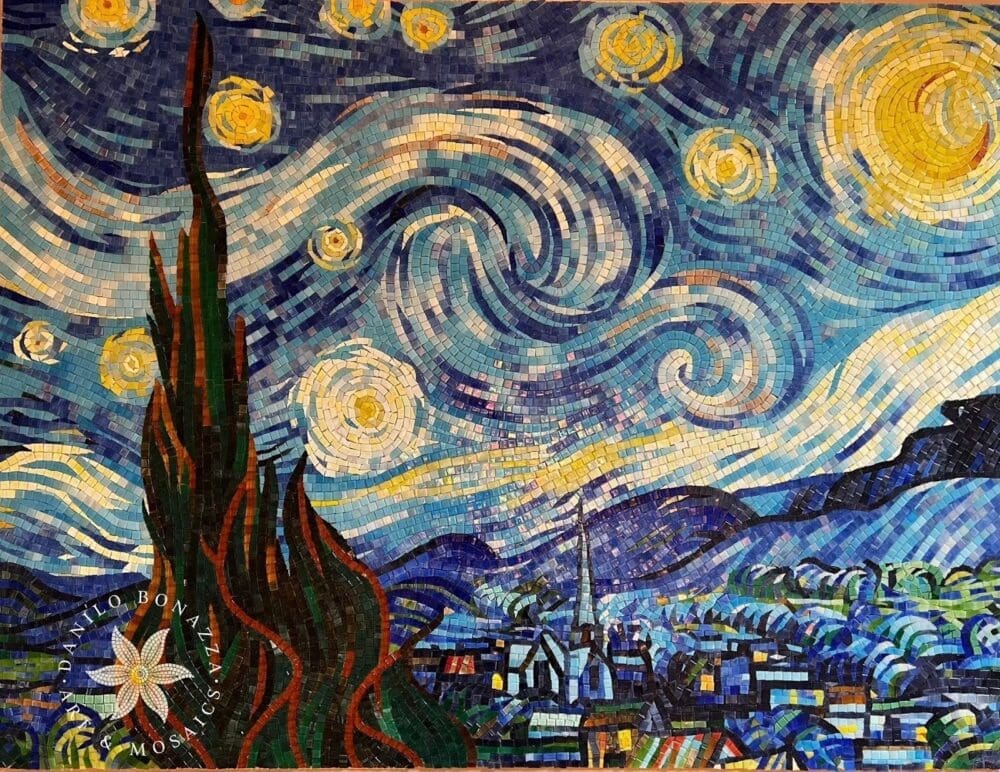
What is a mosaic?
In the words of Danilo Bonazza, from his appearance on the New Theory Podcast with Tom LaVecchia, “A mosaic is a combination of pieces of different materials. Originally in history, [mosaics] were mostly [made of] rocks and marbles, but combined in a way that creates a pattern, scene, or representation. That’s the original concept of mosaic. Then overthe years, it’s been developed in so many different ways, [and] materials changed over time. Historically, the first well-known mosaic was made 5000 years ago in Crete, Greece. It’s still there, so we have a pretty good representation of what they were trying to do and what kind of materials they were using. Over time, things started being incorporated, different materials like gold and precious things, and [mostly what I use today] high-end glass because it gives a bigger range of colors and features that we can use to create different things.”
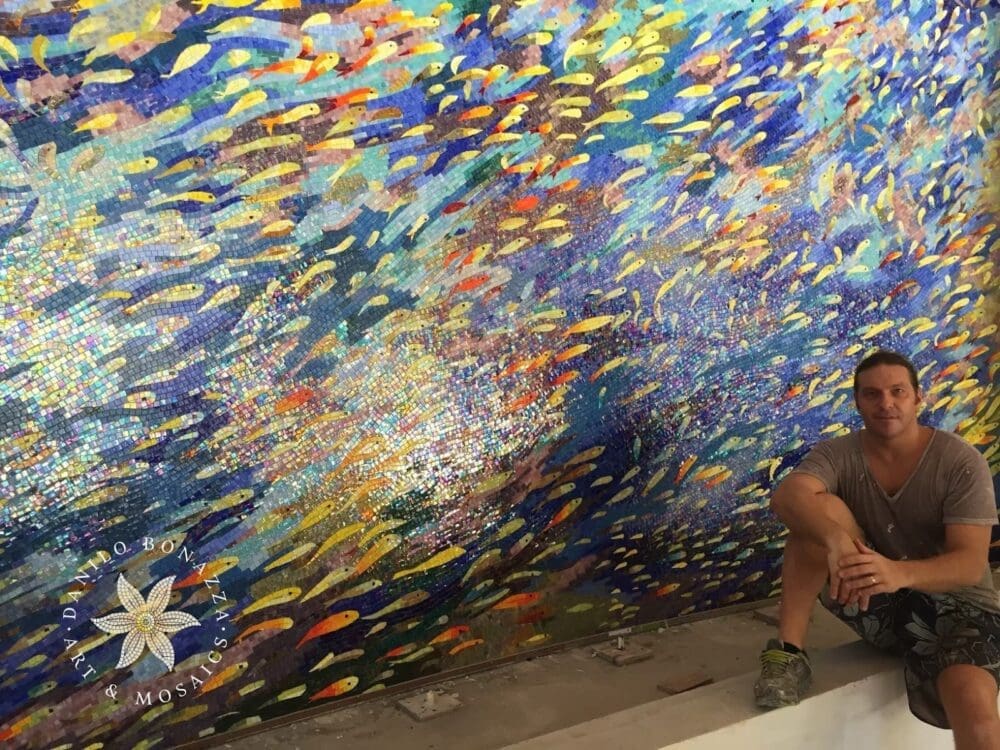
To most people, a broken bowl or plate would be destined for the trash bin, but to Danilo, he sees an opportunity to give the ceramic (or glass) a second life. So, where did such a keen eye for transformation come from?
It may not come as a surprise to learn that Danilo was born in Italy’s mosaic capital of the world, Ravenna. Since birth, Danilo has been immersed in the intricate, antiquated designs created from broken tiles and transformed into brilliant displays of color, statement, and class.
Adversely, Bonazza’s family discouraged him from pursuing art professionally. To appease his family, he went to school to study telecommunication and computer science. After graduating, he worked as a mason but still made time to do what he loved: creating mosaic art.
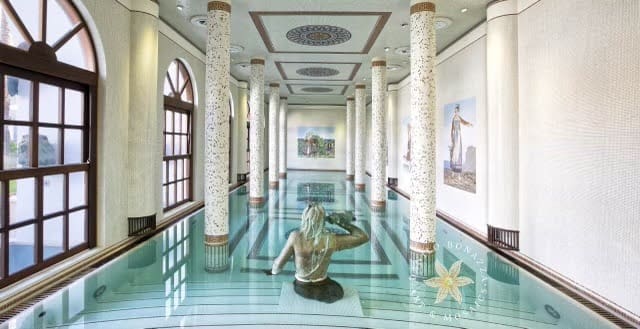
Danilo’s first professional mosaic project, a rose-inspired pool in Geneva, was the epitome of a challenge. As a novice, self-taught mosaic artist with no formal training in executive mosaic artistry and only recently completing college, the first professional project for Danilo was, without a doubt, a leap of faith. Despite having a wealth of knowledge and experience working on his own with glass tiles, he turned to his local library to educate himself on the architectural aspect of the craft. Twenty years later, we can confidently assume the first project was a success that paved the way for Danilo as he established himself in the professional world of mosaic artistry.
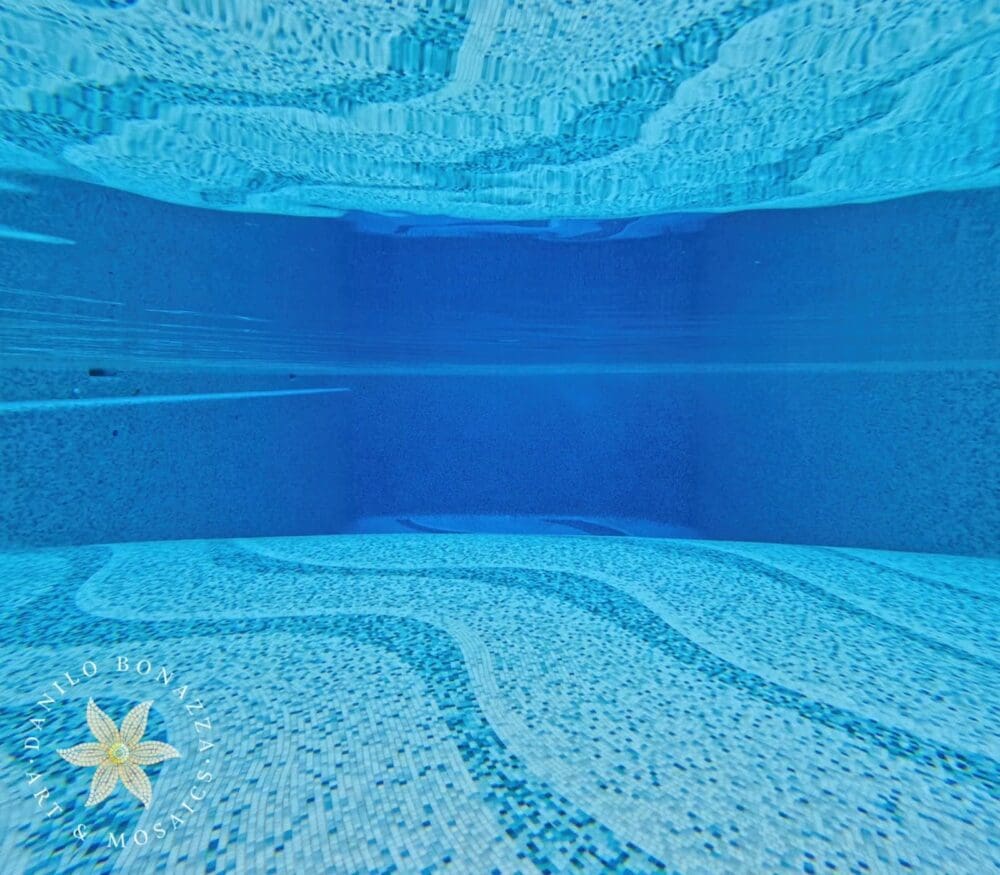
Today, creating mosaics is certainly Bonazza’s professional calling, but it has been and always will continue to be his passion.
Any mosaic created by Danilo Bonazza has unilaterally elevated traditional architecture and landscapes by transforming the scenery into indisputably unparalleled statements of elegance.
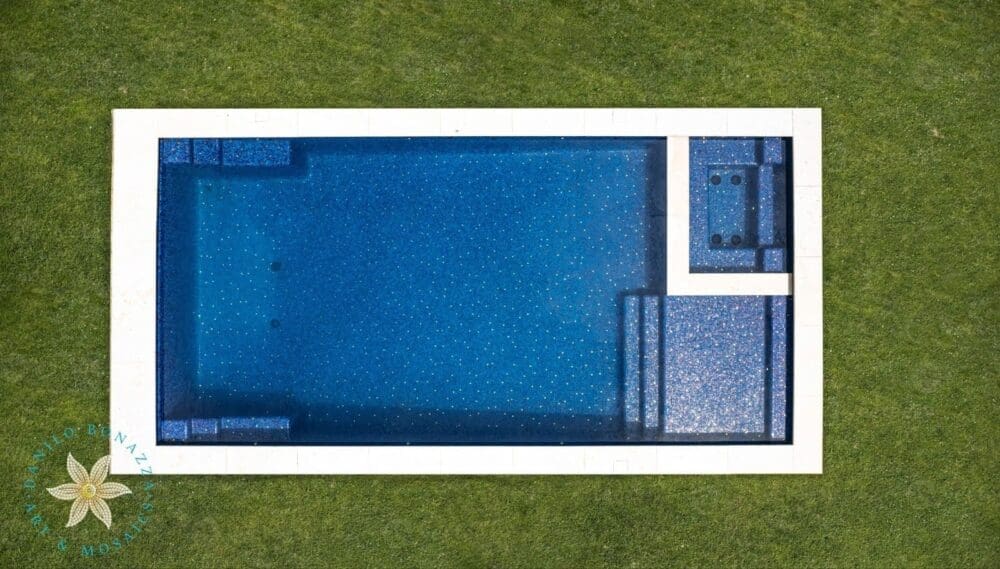
Why pools?
In a pool, swimmers are, quite literally, submerged in an experience. Whether someone is swimming or admiring, pools have the majestic power of captivating people. This cataclysmic blend of physical and mental stimuli, only experienced in a pool, subconsciously and intrinsically inspires the creation and retention of memories. Danilo openly admits his drive and inspiration are fuelled by the experiences he strives to create for his clients.
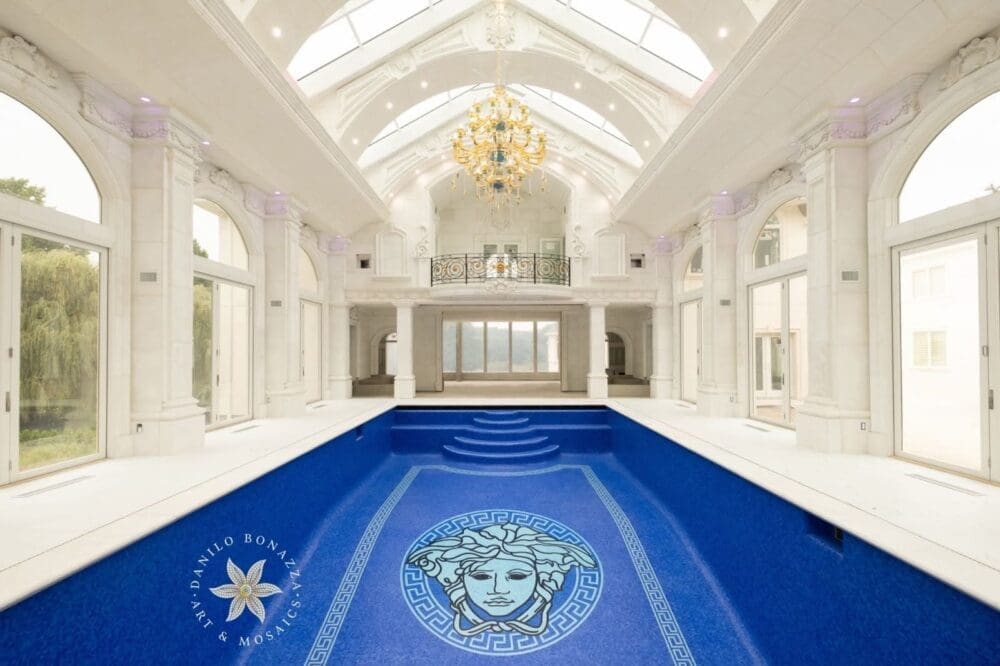
Artistically inspired by Van Gogh, Michelangelo, Leonardo da Vinci, and Rafaello, Danilo Bonazza brings a new wave of inspirational flair to mosaics — and Bonazza is revered for this modernized approach to mosaic artistry. Presently, some of the most traditional mosaic educational institutions (in Ravenna, Italy) focus on only teaching the historical and antiquated practices of the craft. In terms of viability, the conventional way of creating mosaics has demonstrated some need for improvement (if the art is meant to last.)
Epitomizing both integrity and resilience, Bonazza’s modernized methods of waterproofing and installation have stood the test of time while simultaneously delivering a level of opulence. This would never have been possible if Bonazza had stayed within the traditional confines of creation.
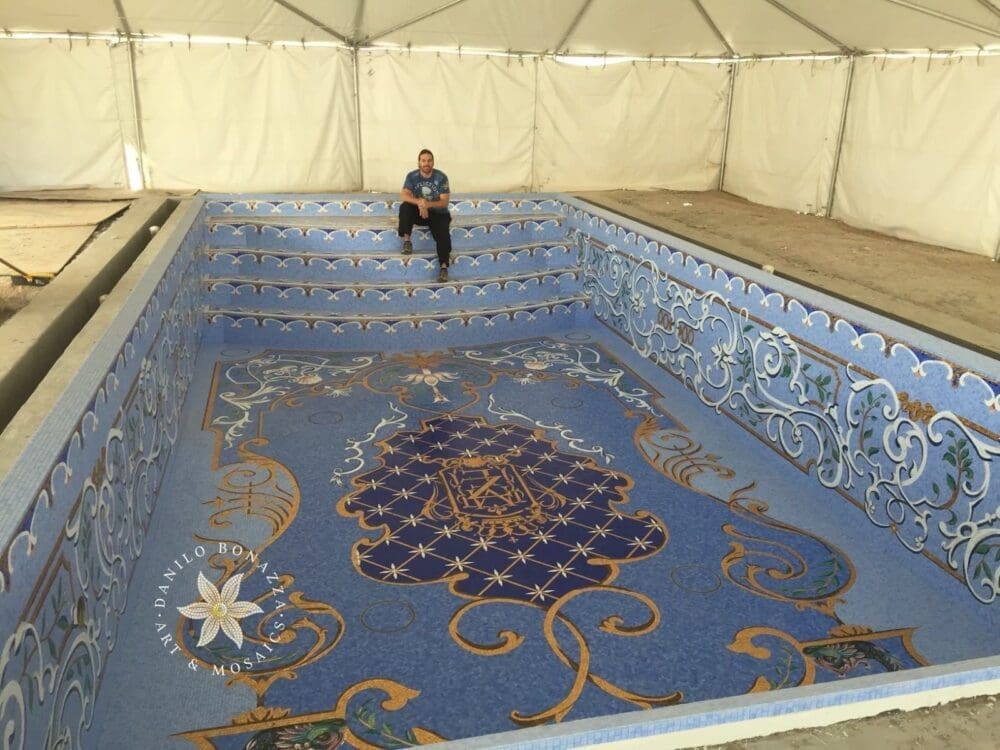
What do you think of the modern world’s approach to teaching your craft?
“In terms of the education of mosaics in schools and classes, one of the limitations of today’s teaching is the craft being taught in the same way it was hundreds of years ago. I feel that today, we have so many new materials and techniques that would allow us to explore new horizons and ideas that in the past were not possible. The traditional way of creating a mosaic should not be the only method taught since the lesson translates only the teacher’s perspective and the already widely-known history. Mosaics are so much more. The designs can have dimension, functionality, and versatility, and exploring the potential of that creativity and how to achieve those effects is much more important for an artist to learn. The old way of doing it has evolved, along with the technology and supplies available today vs thousands of years ago. Knowledge of these modern techniques, as well as being able to use them, is what determines whether or not an artist becomes successful today. Only teaching antiquated techniques puts students at a disadvantage, and my knowledge and experience have helped me understand this. I’d love to share my philosophy with anyone who wants to learn and discover the limitless potential of mosaic art, but it’s difficult being only one artist in a realm of art that dates back so many years. I am proud of my successes and the work I’ve created, but tradition supersedes innovation in this particular case.
For mosaics to live on, students must learn how to use new materials, new productions, modernized installation techniques, and especially waterproofing since it is essential in submerged areas.) All of these are crucial things that modern mosaic schools are currently ignoring.
If we could instead use traditional education as a baseline or the starting point, and then go beyond what is classic and let the student immerse himself into a brand new world, that would be the best transition for this art in the modern century. Historically, mosaics were only single hanging little pieces or larger installations on church walls. Today, they can be multifunctional art pieces (like pools, floating stairs, and so on.)”
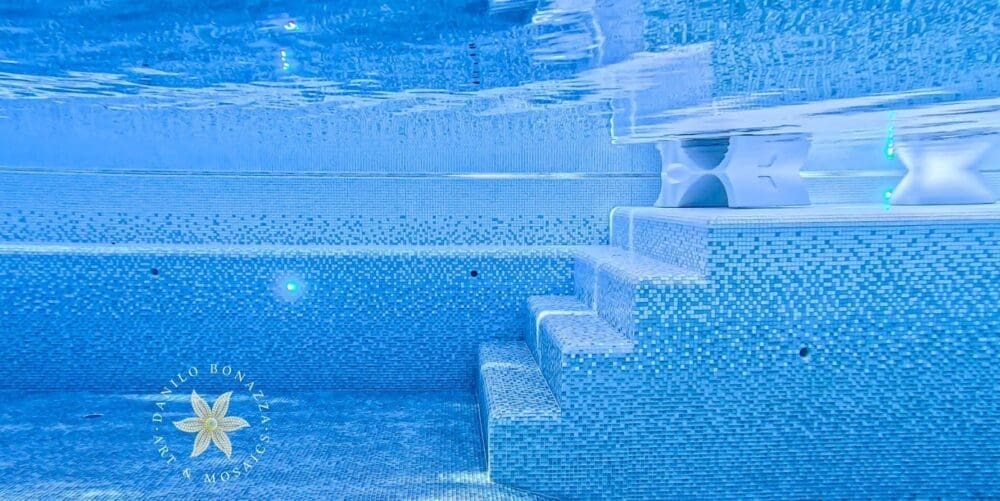
Today, Danilo has a certified method of blending and applying his unique epoxy adhesive and grout (imported from Italy) – an integral part of Bonazza’s ability to deliver excellence. His knowledge of supplies and awareness of wear over time has set a gold standard for waterproofing in pools, spas, and beyond.
While most of Danilo Bonazza’s clientele consists of estates and residential homes, he has been commissioned to showcase his work in many well-known public places.
- The Vatican
- The Crown Hotel in Melbourne
- Dubai Burj Al Arab Hotel
- The Wynn Hotel in Las Vegas
- The heart of Austin, Texas
- The Dominick Hotel and Spa in NYC
- and many more.
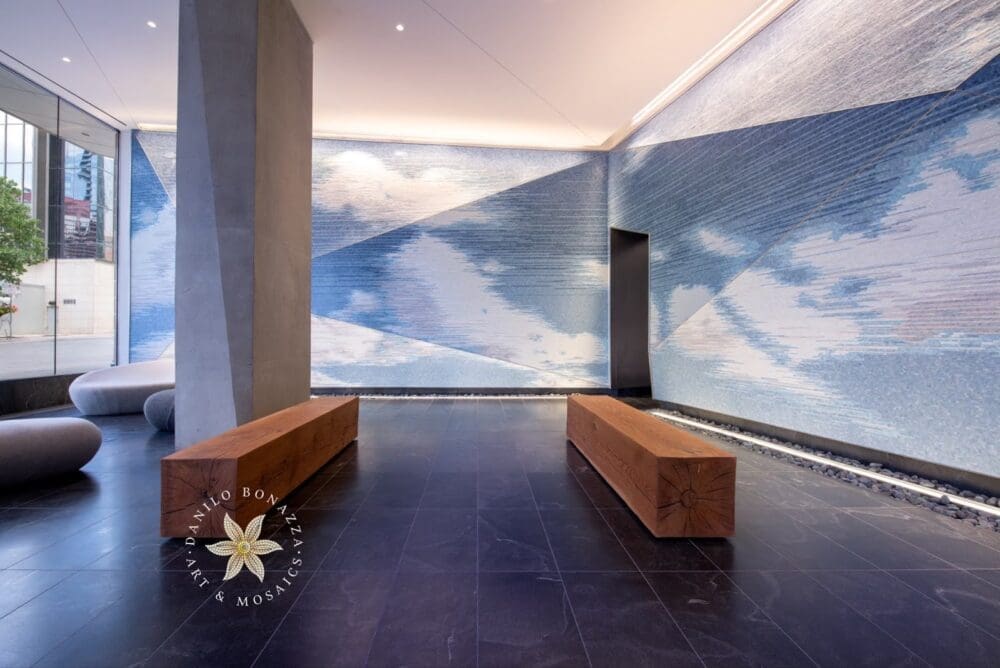
Then, with respect to his client’s privacy and signed NDAs, Bonazza discloses having been commissioned by the former director of the Louvre Museum in Paris, France, heads of the former Soviet Union, Former US presidents, pop music icons, and other high-profile individuals.
By bringing his talent to New Jersey and setting up shop on the East Coast, Bonazza hopes to create more world-class art for people to appreciate here – in their backyards. All art lovers in the Garden State are urged to explore Danilo Bonazza’s work and avail of his availability before it no longer exists! Certainly, Bonazza’s next feature on NJ Digest will spotlight a state landmark, new New Jersey architecture, or maybe even a resident’s backyard!
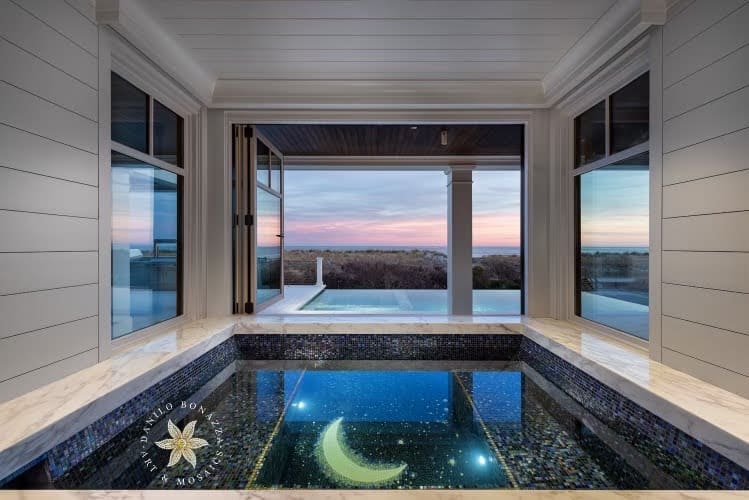
Tom is a lifelong New Jersey resident, Rutgers and FDU alumni and the publisher of The Digest.
- Tom Lavecchiahttps://thedigestonline.com/author/tom/
- Tom Lavecchiahttps://thedigestonline.com/author/tom/
- Tom Lavecchiahttps://thedigestonline.com/author/tom/
- Tom Lavecchiahttps://thedigestonline.com/author/tom/


